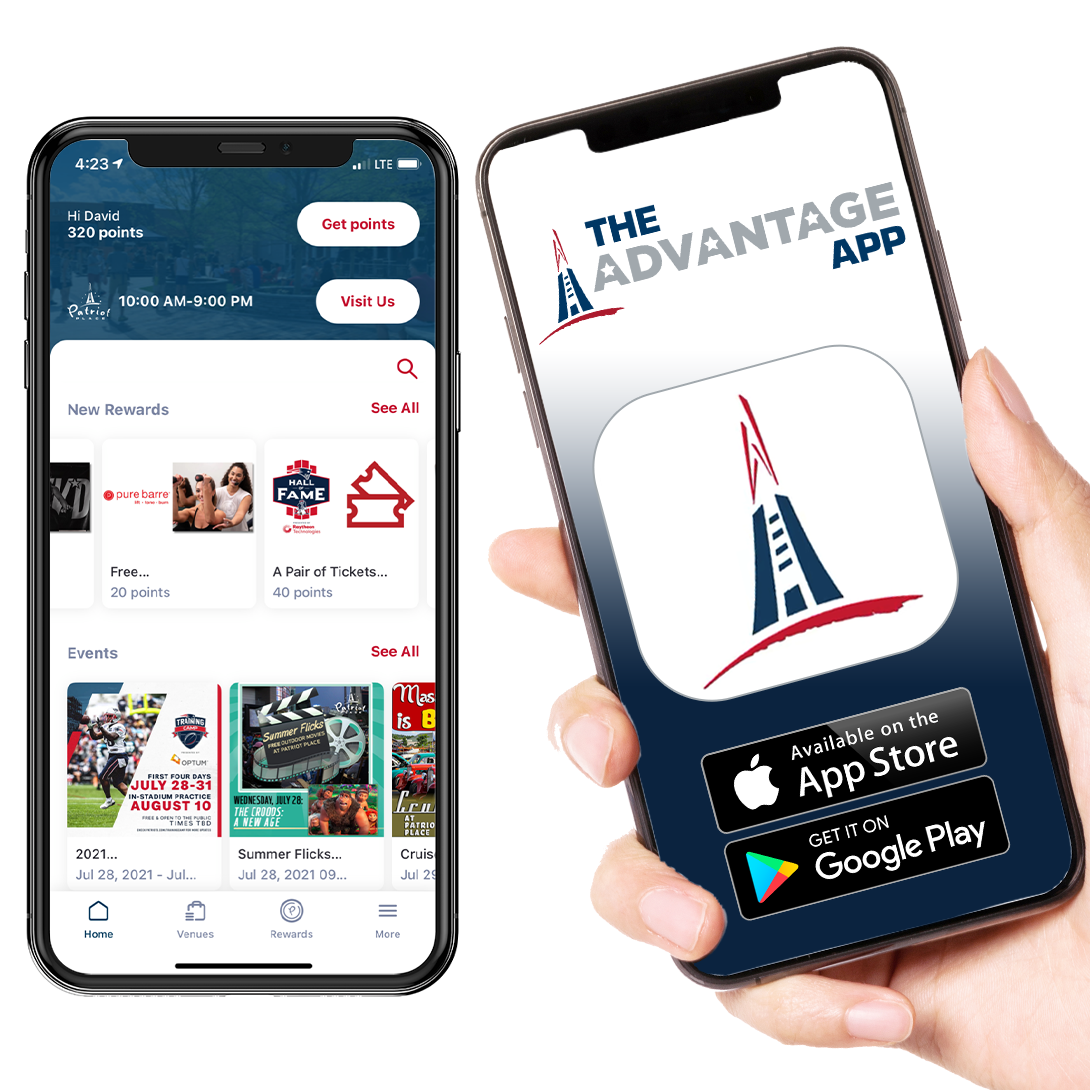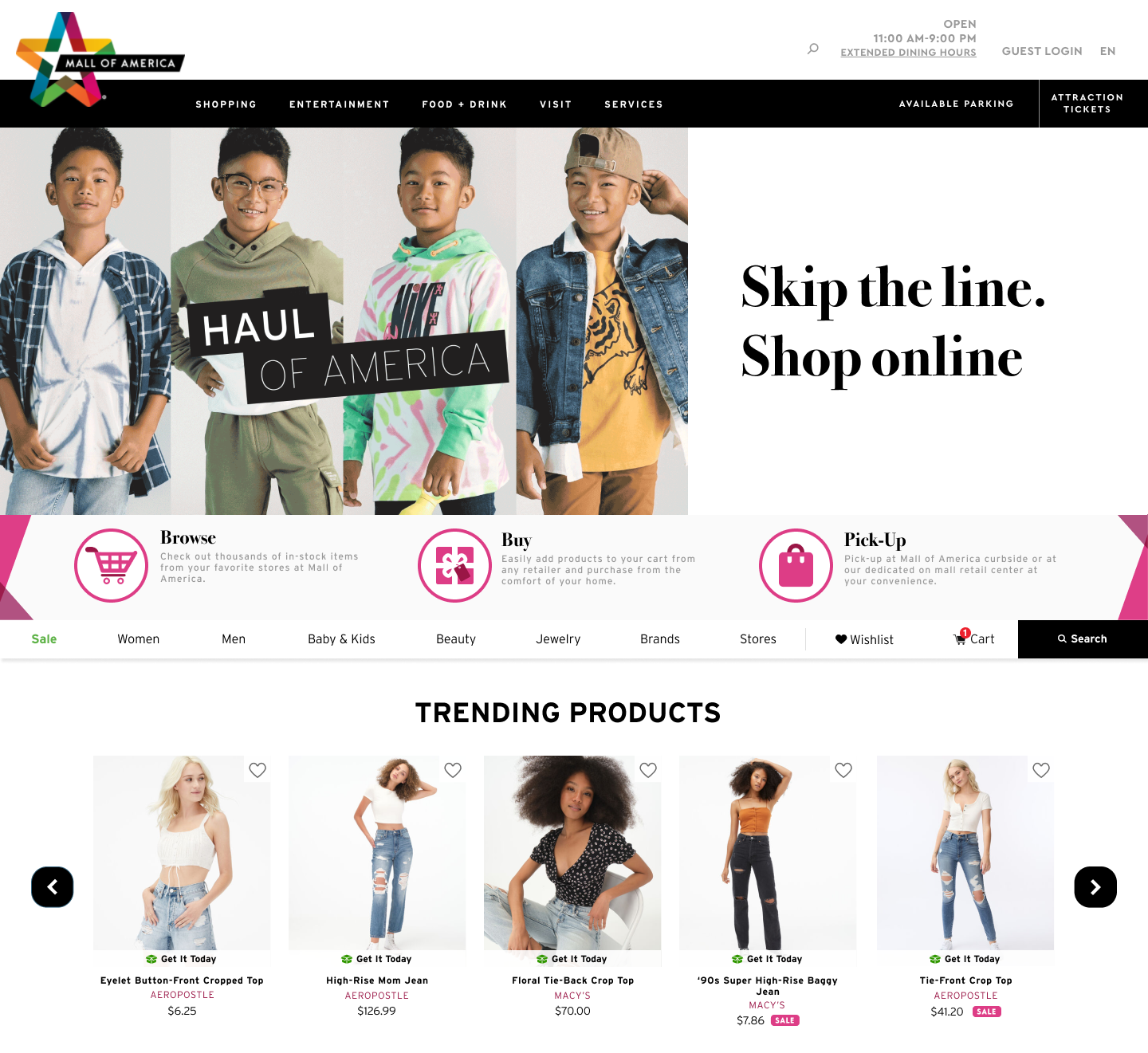During the pandemic, technology and digital innovations helped save much of the brick-and-mortar shopping center industry from a dire demise. But what will the digital property platform look like in a post-pandemic world?
What consumers really want appears to be an advanced hybrid shopping experience that combines the best of both digital and physical retailing. “It is all about removing the friction from the consumer experience so that the retailer and the shopping center can deliver that best-of-breed experience at the consumer’s discretion, however they want to interact with you today,” said John Dee, president of the Americas for Placewise, which works with 1,200 shopping centers around the world collecting data that helps them tailor their digital and physical services to customers.
“After COVID, everybody expects you to be able to order online and pick up anymore,” said Dee. “If you think about where people gather, the shopping center is a marketplace and has been that for over 4,000 years. They are the point of aggregation around a physical marketplace, so they are a natural point to extend the digital interaction out there.”
Jesse Michael, managing director of Adeptmind — which helps shopping center owners set up digital marketplaces and e-commerce solutions for their retailers’ products and uses artificial intelligence to collect data on how shoppers browse and make purchases — said, “Today, consumers want service and convenience first and foremost.”
Curbside, real-time traffic and loyalty programs
One example of technology meeting heightened demand for service is a curbside pickup program Adeptmind has developed with Bluedot, a company that provides location technology for mobile apps. The program enables retailers to track online purchasers as they drive to shopping centers, and it times their deliveries to meet these customers at the curb in a concierge manner. “The whole idea was: We don’t want shoppers to wait; we don’t want shoppers to have that need to dial someone or call someone inside the shopping center to say they are there and ready to pick up their order,” said Michael. “The goal was to have a person actually walking out with the products as the shopper is driving up and just making that a very extremely convenient experience for them without a hitch.”
Shopping centers are becoming more aware of the opportunity to strengthen their own relationships with customers via enhanced digital experiences. “Gone are the days where, from the retailer perspective, the center was supposed to just shovel the snow, keep the bathrooms clean and keep the riffraff out,” said Dee.
Since the onset of the pandemic, Westfield has focused on such relationship building with both retailers and guests, according to U.S. marketing senior vice president Karen Strack. Westfield adopted omnichannel services like curbside pick-up and Line Pass, a virtual queue that uses real-time shopper activity to display traffic patterns and al fresco dining reservations on properties’ websites. “Each of these experiences were critical in nurturing and revitalizing customer connectivity during the pandemic, as well as creat[ing] a sense of excitement and discovery for guests,” said Strack. These services are set to continue far past the pandemic, as well. “We know that stores of the future are stepping away from being places of pure transactions to being places where retailers build a relationship with shoppers.”
Loyalty programs, too, have come into greater use during the pandemic and will evolve in a post-pandemic world. Westfield launched its U.S. loyalty rewards program in 2019 at three California malls and another in New Jersey. The program is now in 11 malls across both coasts and has registered more than 135,000 members with over $127 million in tracked sales. And Foxborough, Massachusetts’ Patriot Place has launched the Advantage App to reward frequent customers with points and incentives. Guests will earn points each time they visit Patriot Place, a departure from conventional, purchase-based shopping loyalty programs. The app offers several ways to earn points, and guests will be able to redeem their points for rewards like Patriot Place gift cards and Showcase Cinemas tickets. Patriot Place is the first U.S. property to use the app, created by Emplate, whose products run in more than 30 malls in six countries.

Omnichannel marketplaces
Mall of America worked with Adeptmind over four weeks to launch a back-to-school program in August. Using hashtag #haulofamerica, shoppers found an online marketplace featuring student-oriented products from 15 Mall of America retailers. “We recognize that back-to-school is so exciting for so many families this year,” said Mall of America senior vice president of marketing and business development Jill Renslow. “We wanted to really celebrate back-to-school because we have had to dial back on so many other promotions and seasonal activations. And we really wanted to take a digital-first approach with back-to-school and reach the teenagers and the kids on the platforms that they are already engaged in.”

A rewards component of the program also gives shoppers discounts on future purchases. “We are making this as convenient as possible,” she said, and testing retailer practices on the property side, “in a collective nature to make it convenient for guests to shop multiple brands with one cart and one checkout process.”
Renslow cited Nordstrom as a leader in digital retailing. “They have a dedicated area where you buy online and you can pick up right at that entry point.” She said Nordstrom shared with Mall of America that a high percentage of shoppers use buy-online-pick-up-in-store for items on their lists but then park and come into the store. “So these tools don’t necessarily compete with brick-and-mortar shopping,” she said. “They complement it.”
The holiday shopping season could be a major test for the digital platform of the future. Renslow said it will be about offering customers options and learning from the back-to-school promotion. “What is hard is that you have to run multiple routes right now with the delta variant,” she said. “We don’t want to be seen rolling out big events with crowds when people are still anxious about what that could look like, so we have to find that balance, just like last year. Whether it be marketplace shopping, livestream shopping and other things that we have got in our back pockets that we are working on, I think there are going to be a lot of options for people to be able to connect with us for the third and fourth quarter of this year.”
Post-pandemic
Once the pressure to be digital first eases, at least slightly, what will shopping center digital platforms look like? “We are learning a lot, and I think there are always going to be components to these technologies and innovations that we are all rolling out that will continue to live on and that we are just going to continue to make them better,” said Renslow. “I can tell you right now [that Mall of America’s back-to-school marketplace] is not perfect. We are learning from it, and it is a nugget of an idea that has a lot of potential.”
Evolution will be essential for survival, according to David Blumenfeld, co-founder with Kyle Spencer of NextRivet, a consultancy that helps centers integrate digital and physical retailing. “There has got to be a continuation of testing and trying new things,” he said. Unless a shopping center keeps content fresh at the property and maintains digital activity, well: “We have seen a lot of shopping centers close,” he said. Blumenfeld believes some trends like curbside pickup could wane as the pandemic does, “but I do think consumer expectations have been forever shifted through the pandemic,” he said.
Technology also could play a significant role in how centers structure leases and attract digitally native tenants. “Sharing data is always going to be a tension point between a landlord and a tenant, but that is where this has to go: starting to really share data and be collaborative,” he said. “Imagine a new tenant comes into the mall, gets a fit out and has access to new data and systems that tie automatically into their e-commerce site, and now all of that data is then shared between the mall operator and the retailer. Then you have got a true ecosystem with a level of service that’s happening versus what it has always been: everybody in it for themselves in a lot of ways.”
Ultimately, integration will play a major role in the success of shopping center platforms. “When you look at returns, delivery, curbside, livestream shopping and marketplace, the key is not keeping them separate but integrating those as best as you can so that it is really easy for customers to connect with us via our website or through our social channels or through our mobile app so it is not confusing,” said Renslow. “Then we have to work with our retailers to learn from them and also to layer in their services in a way that makes it as intuitive as possible for our guests.”
By Ben Johnson
Contributor, Commerce + Communities Today